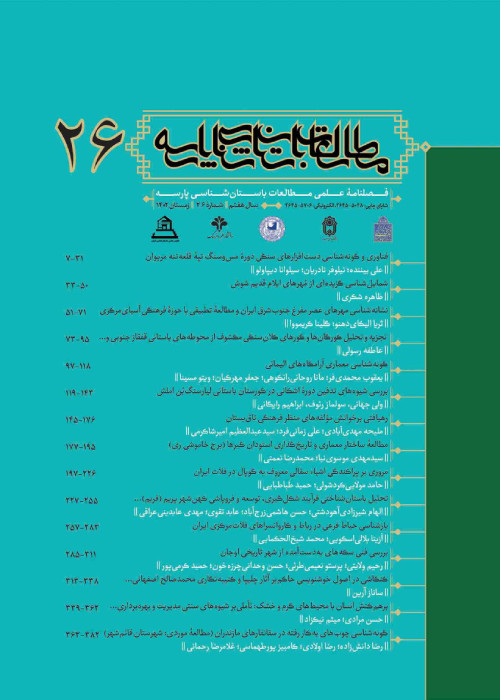The effect of climatic conditions on the structure and architectural components of traditional houses in hot and dry areas of Khosf county, South Khorasan
Khosf county with a hot-dry climate is located in South Khorasan province in eastern Iran and on the eastern edge of the Lut desert. Despite the existence of historical monuments in this region of Iran, little is known about them to archaeologists, urban planners, architects, and art historians. Special attention was paid to the historical urban fabric and residential houses which are mainly related to the late Qajar and early Pahlavi eras, in the archeological survey conducted by the authors in the Khosf region in 2014. Three relatively intact and well-established historical urban fabric in the city of Khosf and the villages of Khor and Noghab were studied during this study and 45 historical houses in these areas and other historical villages of Khosf were examined. The studied historical/traditional fabrics are mostly active and today with some changes in the body of the building, they are still used by the local people of the region. The method of this research is descriptive-analytical and the way of collecting data is also based on archaeological studies in the region to document and collect information about traditional houses of Khosf, and Then based on library studies. This research seeks to answer three main questions: 1- How much has the climate affected the type of structures and architectural components of traditional Khosf houses? 2- Do these conditions prevent the influence of the changes and developments of the common architecture of the Qajar and Pahlavi periods or not? 3- And what have been the common decorative techniques in the architecture of Khosf houses? Based on the research questions, the main objectives of the present study are to investigate the impact of the climatic conditions of the region on traditional houses Khosf and developments in Iranian architecture, as well as the study of different structures and architectural components of these buildings and their related decorations. Despite the general resemblance to traditional architectural patterns in hot and dry regions of Iran, the results show that it is strongly influenced by the climate of the region and in terms of architectural structure and related decorations is slightly affected by Qajar to Pahlavi period architectural developments.
- حق عضویت دریافتی صرف حمایت از نشریات عضو و نگهداری، تکمیل و توسعه مگیران میشود.
- پرداخت حق اشتراک و دانلود مقالات اجازه بازنشر آن در سایر رسانههای چاپی و دیجیتال را به کاربر نمیدهد.



